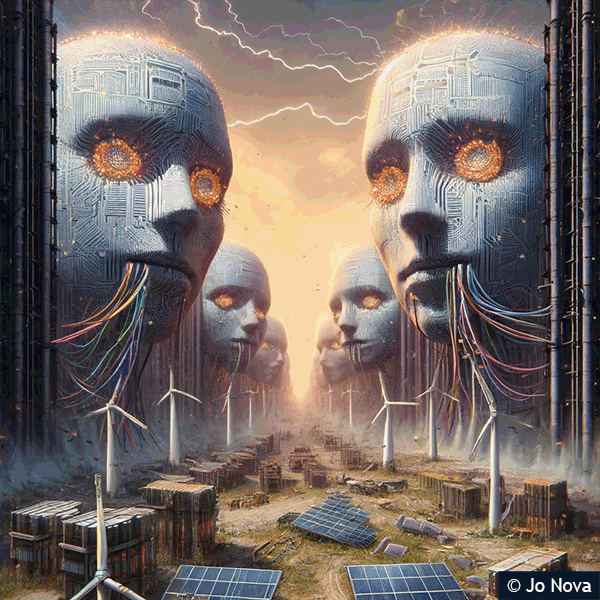Every power plant cen charge batteries on site and save a huge grid loss. We currently love natural gas generators we can actually build anywhere we have demand and quickly as well.
A real power shortage is technically impossible without himan failure.
Just as power grids struggle, the AI and EV electricity monsters turn up for breakfast
As Western grids are teetering, people are suddenly realizing demand for electricity is about to skyrocket
Unstoppable demands are about to meet immovable rocks. A year ago the grid managers thought they had their five year plans figured out, but now the same experts think we are going to need to add twice as much generation as they did then. The watt-hogs have arrived to chew on some gigawatt hours.
The usual slow grid planning processes are getting upended. Take the US State of Georgia for example. They have scored lots of new electric vehicle and battery factories, a few large “clean energy” manufacturing projects, and have attracted a bunch of energy-sucking data centers, but all of these things add massive loads to the grid.
In the last 22 years demand for electricity hasn’t growth much, so in 2022 Georgia Power were expecting to close their coal fired plants pretty soon, and not even put forward a new plan til 2025. Instead Georgia Power are knocking on the state regulators door to let it expand generation. They’re now expecting winter demand will grow 17 times faster than their previous plan, and summer use will explode to 28 times more*. In 2022 they thought the system might be OK until 2030. Now they think the “shortfalls” start by 2025. And 70% of the capacity they want to add is fossil fuel based.
It could be the worst possible time, say, for politicians to force cars and trucks to run off the grid too…
The Editorial Board, The Wall Street Journal
Artificial-intelligence data centers and climate rules are pushing the power grid to what could become a breaking point.
AEP Ohio says new data centers and Intel’s $20 billion planned chip plant will increase strain on the grid. Chip factories and data centers can consume 100 times more power than a typical industrial business. … A new Micron chip factory in upstate New York is expected to require as much power by the 2040s as the states of New Hampshire and Vermont combined.
Electricity demand to power data centers is projected to increase by 13% to 15% compounded annually through 2030.
The shortage of power is already slowing the building of new data centres by up to six years. It’s so bad, Amazon just bought a 1,200 acre data warehouse right next to a nuclear plant so it can live off nuclear energy. The data center may use up to 960 MW of power, which would be nearly 40% of all the power provided by the nuclear plant.
It’s almost like the CCP is in charge of our electricity grids?
The green subsidies make the unreliable generators happy, but more unreliables in turn destroys the market for the reliable guys. There’s not much point running major capital infrastructure as a back up for a second rate generators. Not surprisingly, many of the essential generators are about to go off to grid-heaven forever and the new replacements are, as the bureaucrats say “not clearly identified” yet.
PJM Interconnection runs the wholesale power market on 13 US States. They latest report signals trouble coming according to the WSJ:
About 20 gigawatts of fossil-fuel power are scheduled to retire over the next two years—enough to power 15 million homes—including a large natural-gas plant in Massachusetts that serves as a crucial source of electricity in cold snaps. PJM’s external market monitor last week warned that up to 30% of the region’s installed capacity is at risk of retiring by 2030.
Meantime, the Inflation Reduction Act’s huge renewable subsidies make it harder for fossil-fuel and nuclear plants to compete in wholesale power markets. The cost of producing power from solar and wind is roughly the same as from natural gas. But IRA tax credits can offset up to 50% of the cost of renewable operators.
All the artificial intelligence arriving appears to be shining a light onto human stupidity.
Who could have guessed that if we subsidize unreliable generators we would get an unreliable grid?

No comments:
Post a Comment